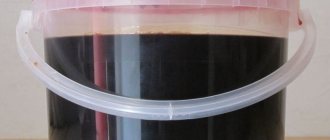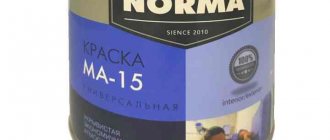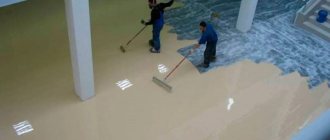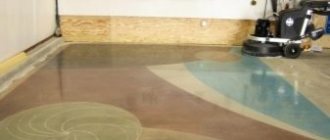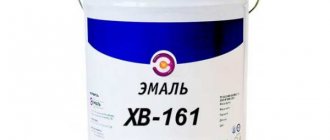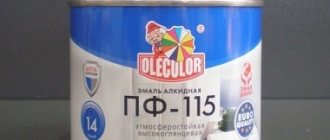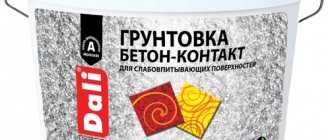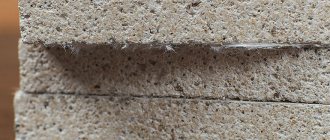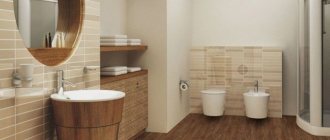Area of use
This composition perfectly protects all kinds of devices from the influence of hot liquids, weak acids, and is used when painting containers in which gasoline is stored, as well as during the manufacture of binding components of layered types of plastic.
Nowadays, bakelite varnish is used everywhere; this solution is used in the production of various substances, as well as in the construction industry. The characteristics of this material allow it to be used for the following purposes:
- covering all kinds of surfaces, impregnating them and joining them;
- effective protection of heat exchange equipment, which is adversely affected by heated technical fluid;
- reliable protection of various elements of equipment and parts from the effects of salts and acids with a moderate impact indicator;
- processing containers of any volume in which petroleum products and gasoline will be stored;
- creating binding components used during the production of plastic parts, especially during the production of laminates to which organic fillers are added;
- production of chemical fibers;
- production of metal devices and various abrasive parts and devices;
- creating an anti-corrosion layer on pipeline systems, air ducts, air purifying filters and structures;
- coatings of concrete and wood surfaces, for which bakelite-based varnish provides reliable protection and extends their service life;
- often used for various purposes in chemical engineering.
Bakelite in Russia
Table lamp made of carbolite produced (Orekhovo-Zuevo)
In Russia, work was also carried out on the creation of plastics based on phenol and formaldehyde, in particular, work was carried out in a laboratory at a silk weaving factory in the village of Dubrovka in the vicinity of Orekhovo-Zuevo. In 1914, a group of chemists: V.I. Lisev, G.S. Petrov and K.I. Tarasov synthesized carbolite, a Russian analogue of bakelite. Carbolite gets its name from carbolic acid, another name for phenol. To promote the new invention in Russia and abroad, the Vasiliev and Co. trading house was founded. The Moscow Provincial Board issued a certificate to the trading house that it was allowed to maintain a plant for the production of a dielectric material called “carbolite”. A plant was established in the Moscow province, Bogorodsky district, 3rd camp of the Zuevsky volost near the village of Krestovozdvizhenskoye. The plant was named “Karbolit”, it still exists today. In 1919, the plant was nationalized, and in 1931 it was included in the Soyuzkhimplastmass association.
Currently, phenol-formaldehyde resins and plastics based on them are produced at many domestic chemical plants.
Specifications
Externally, bakelite varnish looks like a translucent liquid; it has a burgundy or red color. There are no inclusions, foreign particles or impurities in this solution. Many varieties of this bakelite mixture, for example LBS-1 varnish, contain 50-60% bakelite resin. The dynamic viscosity index can be different, in the range of 100-900 mPa-s.
This solution contains approximately 10% water and 9% free phenolic elements. In about one to two minutes, this mixture undergoes gelatinization. Technical characteristics of bakelite varnish may vary, depending on the specific brand of solution. The varnish consumption is about 120 grams per square meter if LBS-1 varnish is applied with a brush. When applied from a spray bottle, the consumption will be less.
Short description
LBS1 varnish is a mixture of phenol-formaldehyde resole resin dissolved in ethyl alcohol.
This substance is produced according to the criteria of GOST 901-78. The alcohol solution is widely used: for joining, gluing, impregnating surfaces made of a wide variety of materials (these are the main areas of application of varnish). It is also worth noting that alcohol varnish LBS1 perfectly copes with the protective function of various devices from the negative effects of hot liquids and weakly diluted acids, and is also used for painting gasoline containers and the production of connecting elements of laminated plastic.
Basic Rules
Before using bakelite paint and varnish composition, you must familiarize yourself with the following important rules that must be followed:
- the surface on which the varnish is applied must be free of dust, dirt, rust, grease, oil, and it must also be dry;
- Before application, bakelite varnish LBS-1 must be thoroughly mixed and shaken;
- During application, a film appears on the base, which needs to be baked; for this, heat treatment is carried out, during which the temperature gradually increases and should reach 160 degrees. This procedure produces a cross-linked polymer. When heated to a temperature of 150 degrees, the gelatinization process takes place in about 2 minutes, usually in 70-80 seconds;
- Bakelite-based varnish should be stored in a dark room, the air temperature should not exceed 20 degrees.
Surface and varnish preparation
In order for the protective coating to be as reliable and high-quality as possible, you first need to prepare the base. It removes greasy stains, dirt, dust, scale, rust, old finishing and paint materials. The best cleaning is achieved using shot blasting and sandblasting. You can also use sandpaper or an electric sander.
At the next stage, bakelite varnish LBS-1 is prepared. Before applying it to the surface, you need to shake it so that it becomes homogeneous. If the composition contains 40% kaolin or graphite, then such a bakelite composition can be used as an excellent primer solution. It can be applied to metal substrates to reliably protect them from corrosion and rust.
Varnishing
The characteristics of bakelite varnish LBS-1 or a solution similar in composition allow it to be applied using a brush and a spray bottle. A primer mixture based on bakelite varnish can be applied 3 hours after painting. The primer can also be applied with a paint sprayer.
The applied first layer of varnish must dry for four to five hours, then polymerization is performed. After this, the treated surface is covered with a layer of primer, then a second layer of varnish is applied, which should contain 25% filler. When the second coating is applied, just as in the first case, it is necessary to carry out polymerization. All subsequent coatings must be applied without filler. It is important to remember that the total thickness of all layers of varnish should not be more than 0.5 millimeters.
It is best to apply bakelite-based varnish using a spray bottle or brush. The spraying method is used when it is necessary to cover a large area; during application it is necessary to ensure that the layer is applied evenly, there are no thin areas, cracks, sagging, drips or too thick a layer.
To obtain a coating of maximum strength, a primer and 2-3 layers of cotton fabric are applied to the base, which is pre-soaked in Bakelite paint and varnish material.
Bakelite resin treatment
Types and characteristics of heat-resistant varnish for fireplaces and stoves
Bakelite resin in the base of the varnish allows this product to be used as anti-corrosion and other protection for chemical units. The process of using this substance for the protective treatment of devices requires special care and professionalism. Let's consider several stages of protective treatment of devices using this type of paint and varnish solution.
Preparatory stage
At the preparatory stage, the surface is carefully processed in order to obtain a reliable coating. The surface of the equipment is cleaned in advance from excess dust, dirt, grease marks, rust or scale using sandblasting or shot blasting equipment. The cleaning process stops when a gray matte tint appears.
The next step is preparing the solution. Before application, the varnish must be shaken to ensure uniformity. If the composition contains 40 percent filler (graphite, kaolin or diabase mixture), the solution can be used as a high-quality primer material. This will protect metal products from premature rust or corrosion.
A primer layer based on bakelite varnish LBS 1 is applied with a paint brush with slight pressure on the surface three hours after painting. For large surfaces, you can use a paint sprayer.
Applying varnish
The first, surface layer of varnish is left to dry for 4-5 hours, after which it is polymerized. Next, the paint surface is subjected to primer work and the application of a second layer consisting of 25% filler. After applying the second layer (as in the case of the first layer of paint and varnish composition), polymerization is carried out.
To paint surfaces with bakelite-based varnish, it is better to use a brush or a paint sprayer (in case of painting large surface areas). In the process of finishing the surface, it is necessary to monitor the uniform application of the coloring matter, that is, thin layers should be obtained without cracks and sagging in the peripheral part.
Pasting cotton fabric
The principle of gluing fabric is as follows:
First, the fabric is cleaned of accumulated dust and dirt, starch is removed, thoroughly washed, dried and cut into small pieces. Cut pieces of fabric are soaked in a 25% solution of LBS 1 varnish of a certain consistency. After 5 minutes, the fabric is removed and twisted
Please note that you should only twist the fabric while wearing closed rubber gloves to avoid burns and skin irritation. The fabric is left to dry until the solvent is completely eliminated. After the fabric has completely dried, it is attached in a tack-free state to a pre-primed metal structure.
Bonding cotton fabric
The gluing process includes the following steps:
- The material is cleaned of dirt and dust, starch is removed, the fabric is washed well, dried and cut into small strips.
- Prepared pieces of cotton fabric are soaked in a 25% solution, for example, LBS-1 varnish is used.
- After 5 minutes, the pieces of fabric are removed from the container with varnish and wrung out. The spinning process must be performed strictly with rubber gloves to avoid irritation and burns on the skin.
- The cotton fabric dries for several hours to allow the solvent to evaporate.
- After partial drying, the sticky pieces are glued to a primed metal surface.
During this procedure, it is necessary to ensure that the fabric does not stretch, because if it stretches, it may tear during drying, as it will shrink. At the last stage, the cotton material is painted using a brush dipped in LBS-1 varnish.
Application
Bakelite sheets are used in the following areas:
- automotive industry: production of sides, floors, trailers, containers;
- shipbuilding: plating of small ships and sea yachts;
- hydraulic engineering: design of hydraulic locking equipment (sluices, hydraulic valves, etc.);
- construction: designing formwork for building up reinforced slabs, columns and other building elements, erecting canopies, partitions and other architectural forms.
It is worth noting that bakelite plywood is far from the cheapest building material, so not everyone can afford it.
Coating of chemical equipment
This varnish composition is used to protect various chemical equipment, for example, coils, mixers, and others. To do this, prepare cotton fabric, which is cut into strips, the protected surface is tightly wrapped with them, and during wrapping it is necessary to overlap the fabric, approximately 3-4 centimeters.
You can wind any number of fabric layers, depending on your needs. After winding all the layers, they are covered with a layer of bakelite varnish mixture, then the coating is treated thermally, during which the composition hardens.
Upon completion of the heat treatment, the coating must be cooled for 7 hours at an air temperature of 25 degrees. If these rules are followed, the varnished surface will be shiny and smooth, red-brown in color.
You can easily check the quality of the treated surface; to do this, you need to take a rag, moisten it with ethyl alcohol, and rub it several times over the varnished part. If yellow or brown spots appear on the rag, this will indicate improper heat treatment. And if the rag remains clean, then the varnish composition has polymerized correctly.
